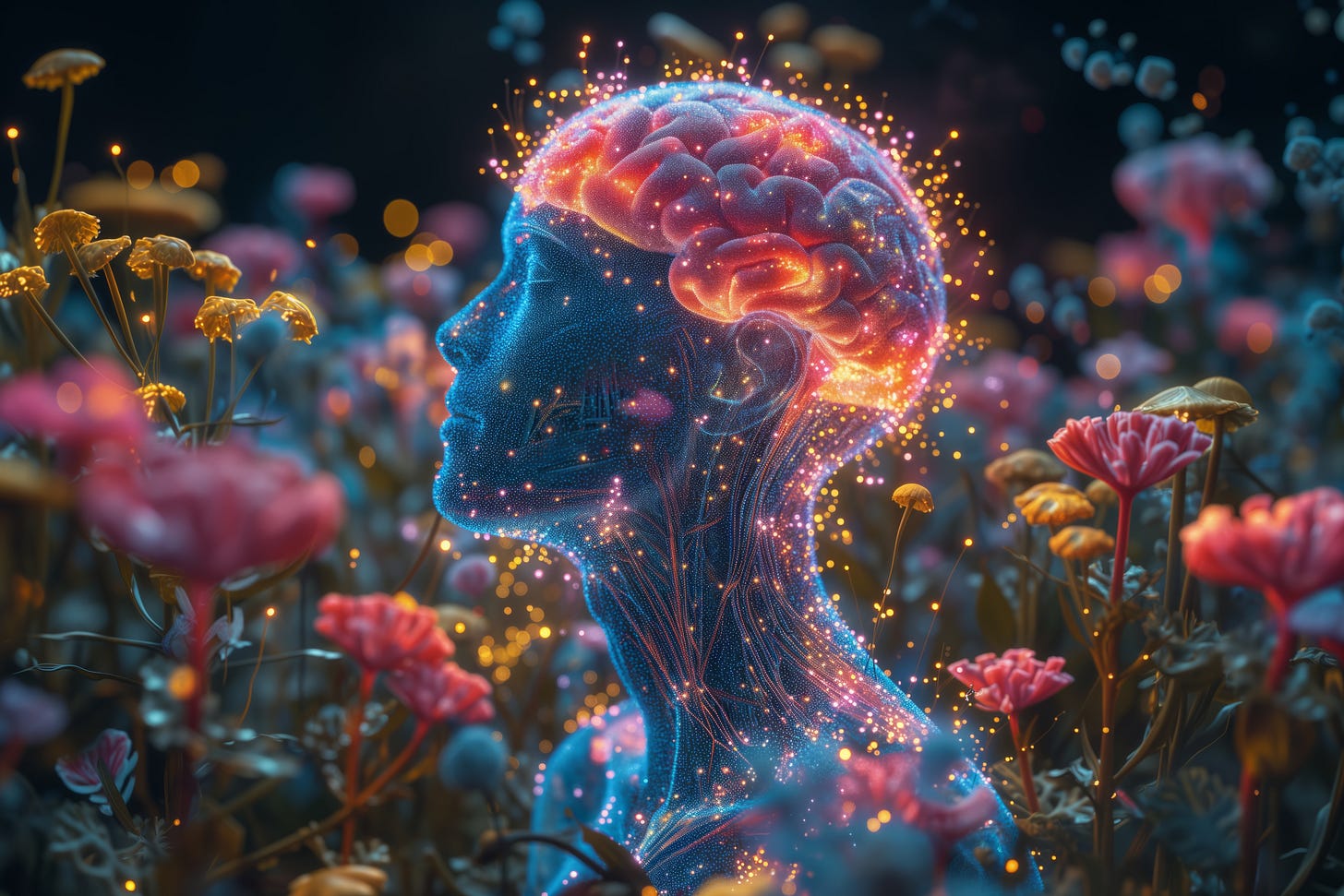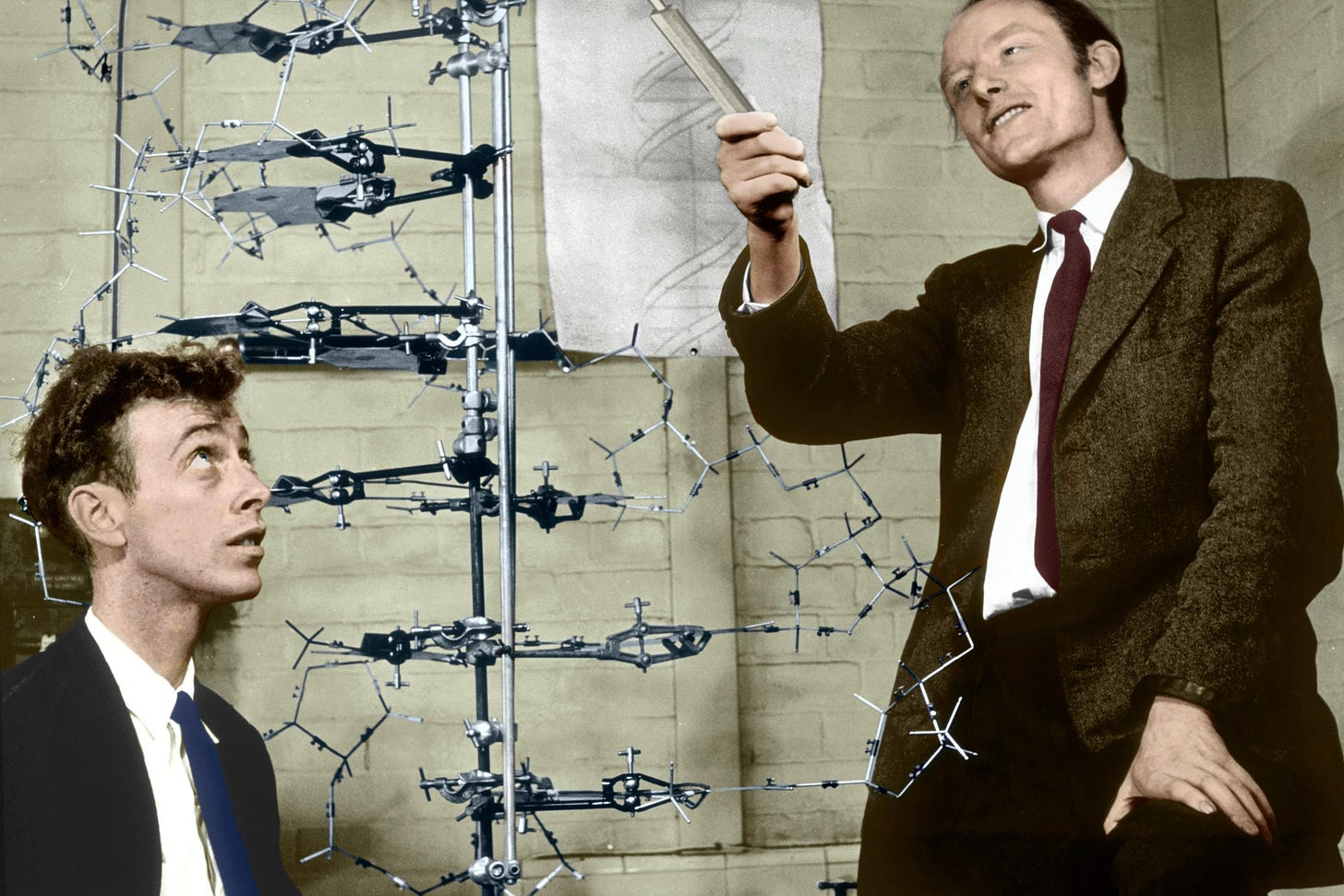What If We Gave LSD to a Robot?
What Psychedelic States of Consciousness Tell Us about Artificial Intelligence
Today we’re exploring what Stan Grof calls “holotropic” states of consciousness, how inspiration and imagination seems to arise from those states, and what that means for artificial intelligence (AI).
But first, a quick update on my larger projects…
As most of you know, I’m working on a six-part course about what it means to be human in the age of AI, as I previewed in this video. I am also working on a book about that, where I explore in-depth the wonders of being human but also the implications of a more ensouled worldview like monistic idealism for AI. I’m sending the book proposal around and will start sharing pieces of it with my premium subscribers.
Okay, now onto today’s topic…
Psychedelics, Consciousness, and AI
The creators of artificial intelligence (AI) have convinced the media and the general populace that AI can easily replace not just left-brain jobs like accountant or radiologist, but creative work too. If you believe the hype, within a few years Hollywood films will be entirely AI-generated (I don’t think they will). Of course, one could argue that that might be an improvement over the glut of big-budget superhero action films.
Not only that, Silicon Valley is promising us the arrival of “superintelligence” or even the Singularity any day now. The dominant narrative from technology leaders and transhumanists like Elon Musk, Ray Kurzweil, and Nick Bostrom is that superintelligence is immanent and that it will replace humans and render us obsolete.
But, as we will see, these are overblown and empty promises, especially when we consider rarely discussed forms of reasoning, the phenomena of inspiration and revelation, and the model of the psyche or consciousness presented by Stanislav Grof.
The Mystery of Imagination and Creativity
How does imagination work, and why do innovative or inspired ideas seem to arise more frequently when we’re not thinking, and especially in altered (or holotropic) states of consciousness? Can AI ever be as inventive and creative as the human mind? Are there dimensions of invention and imagination it can never reach?
Let's see what psychedelic or expanded states of consciousness can tell us about imagination and intelligence, especially artificial intelligence, and its limits.
You can watch the full exploration in my YouTube video below.
Part of what I am doing with these videos is attempting to counteract the narratives about humans being so easily replaceable by machines. There is so much more to being human than cognitive intelligence. And even cognitive intelligence is hard, as I explained in my last video.
Holotropic States
For us humans, there are many reliable ways to enter a holotropic state. Catalysts for such states include meditation, yoga, specific forms of breathing, dancing, dreaming, fasting, ingestion of psychoactive substances, spiritual emergencies, and even something as tame as coffee. ☕️
Among the many examples of inspiration arising from these states I provide in the video above, one of the most unexpected was that Francis Crick, the Nobel-Prize-winning scientist who worked with James Watson to identify the structure of DNA, admitted to using small doses of LSD to enhance his thinking. He allegedly told his friend Kemp that “he had a vision of the double helix DNA molecule during an LSD experience, which helped him to unravel its structure.”
Now, I’m not advocating for drug use to enhance creativity, only pointing out that holotropic states induced by psychotropic drugs can also be fostered through more natural and healthy means like meditation, breath work, and other yogic practices like chanting specific mantras.
I personally have had some of my most profound ideas and insights during meditation or a holistic yoga practice.
As I enumerate in the video, a majority of scientists, philosophers, and inventors have received their novel ideas and breakthroughs in some sort of holotropic state.
What does our access to these states mean for AI? Given that current approaches to AI are attempting to model the neuronal network in the human brain, can we model in machines and machine learning systems what neuroscientists and researchers describe as a reduction in these holotropic states in the “default mode network?”
Consciousness & Implications for AI
In light of the mystery of holotropic states of consciousness, it is clear that there is something fundamental missing from the current approaches to modeling intelligence.
Beneath all the hype and big promises lies an enormous gap in our understanding of how human cognition and consciousness works, especially when it comes to invention, epiphany, innovation, and mystical transcendental experiences.
Stan Grof has contributed as much as anyone to understanding these deeper recesses of our psyche. But his work points to transpersonal realms and ontological realities unacknowledged by mainstream, materialist science, including computer science.
If true intelligence involves something more than induction and deduction, and follows abductive inference into non-material, unconscious realms of imagination and intuition, then AI researchers are nowhere near achieving true (or “general”) intelligence, let alone anything approaching creativity, despite all their confident promises.
In short, humans remain as unique and irreplaceable as ever.
Lastly, I moved to Substack! I appreciate your staying with me on this wild philosophical journey, especially those of you who subscribed way back in 2019! The larger direction of my work continues to be the intersection of philosophy, wisdom, technology, and the future of humanity. I’m spending part of this summer sort of laying the groundwork for that. So it will only get more interesting!





Awesome read! Really enjoyed the ideas, and appreciate that you could prepared it in two forms, both reading and watching 🙌